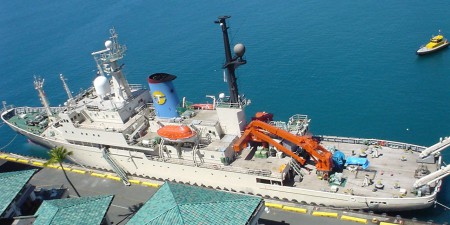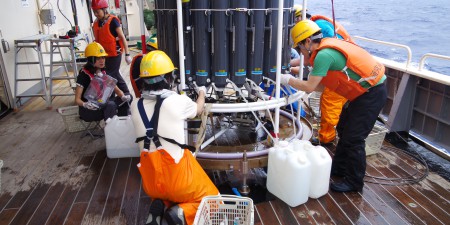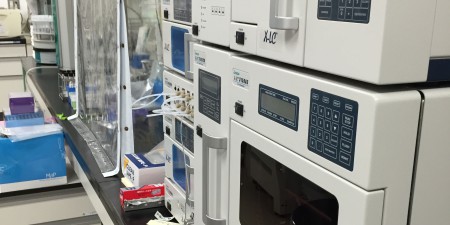The first serious efforts to make biogeochemical observations in outer ocean regions date back to the 19th century. Since that time, the distribution patterns of plankton, nutrient salts, organic matter, and trace elements in the world ocean have been an active subject of international research. Today, data from satellite observations of oceans and results from supercomputer numerical modeling analyses are both widely used, and we have acquired a much deeper understanding of key features of the cycle of bioelements in a variety of oceanic regions. However, advances in this field of research have also identified new mysteries.
The mystery of dissolved organic matter
One example of such a mystery is the puzzle of dissolved organic matter in ocean water. Precision measurements of the quantities and isotope ratios of carbon contained in dissolved organic matter reveal that the ocean contains some 700 billion tons of carbon in the form of dissolved organic matter; moreover, the majority of this carbon consists of recalcitrant components, which can only be degraded at an extremely slow rate. Several studies have estimated that the dissolved organic carbon in the ocean has a mean lifetime (the time elapsed between the formation of organic matter and its eventual remineralization to carbon dioxide) of 6,000 years. The persistence of such enormous quantities of carbon in ocean water for such long periods of time may influence the increase or decrease of carbon dioxide in the atmosphere (whose total carbon-equivalent quantity is 690 billion tons) and the productivity of marine ecological systems.
However, there remain many questions for which we have only partial answers: Precisely what sort of chemical substance is dissolved organic matter? How is it formed, and why does it persist for such long periods of time without being mineralized? This project aims to shed light on a number of poorly understood questions regarding the large-scale cycle of bioelements in oceans. To this end, we exploit cutting-edge facilities on the Hakuhoumaru and other academic research ships to make extensive observations in a variety of oceanic regions, including the Pacific Ocean, the Southern (Antarctic) Ocean, and the Arctic Ocean.


